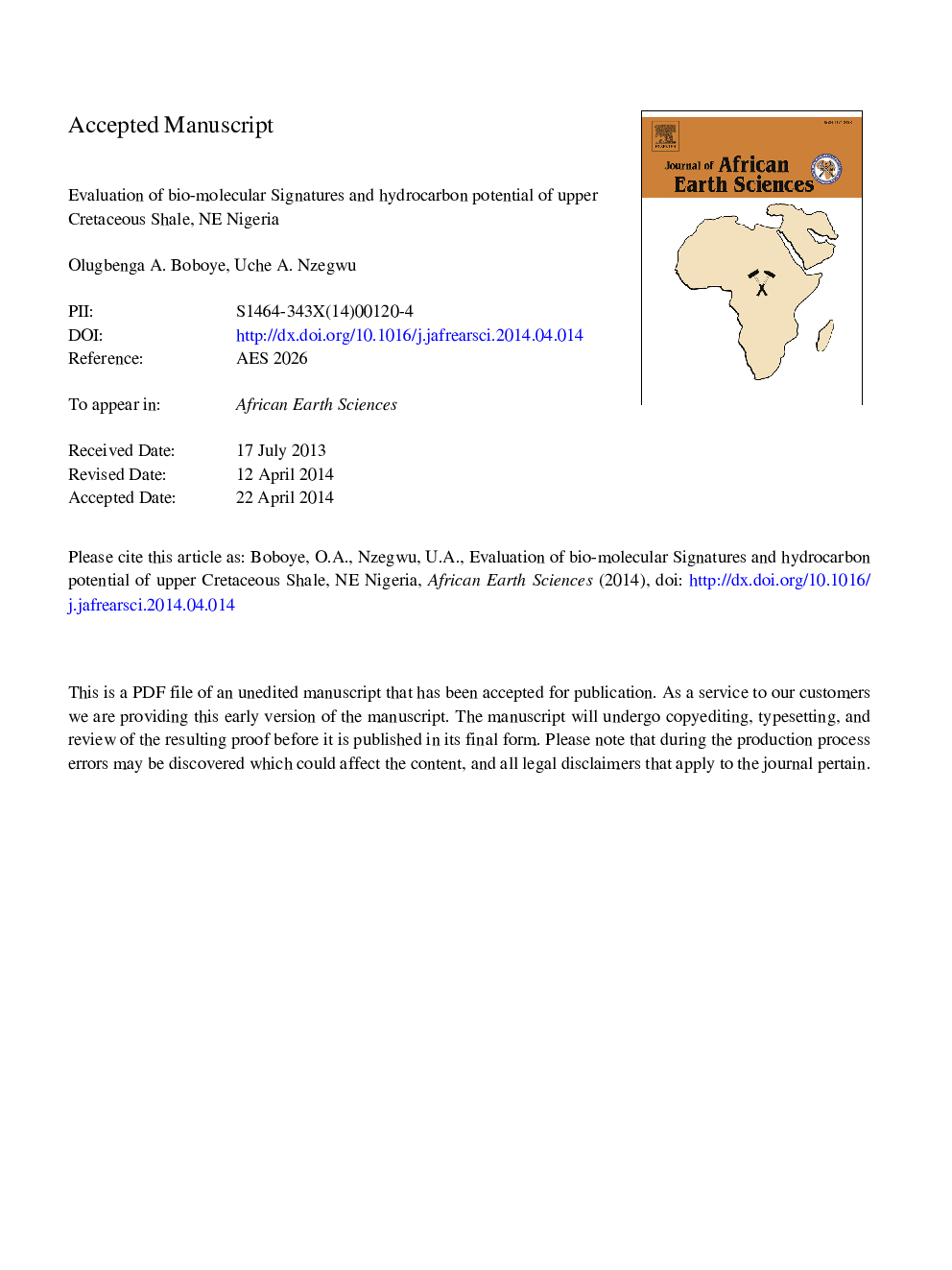| Article ID | Journal | Published Year | Pages | File Type |
|---|---|---|---|---|
| 6443859 | Journal of African Earth Sciences | 2014 | 63 Pages |
Abstract
The results showed that TOC of the Coniacian-Paleocene shale units exceed the threshold (0.5 wt%) needed for petroleum generation. This classifies it as potential source beds. Evidence from biomarkers indicates a preponderance of marine organic matter with subordinate terrigenous input. The quantity of gammacerane occurrence suggests normal saline environment. The presence of oleanane index indicates angiosperms input into Cretaceous-Tertiary source rock. C35/C34 homohopane ratio showed the anoxia development towards the center of the basin. C29ααα (20R)/C27ααα (20R) sterane ratio indicate the dominance of marine organic matter with subordinate terrigenous input. The 22S/(22S + 22R) ratio of C31 hopane have not reached equilibrium as evident by immaturity to early mature stages from diagnostic ratios of βα moretane/αβ hopane, Ts/(Ts + Tm), 28,30-bisnorhopanes/17α-hopanes, diasteranes/regular steranes, ααα steranes/αββ steranes and 20S/(20S + 20R) C29 regular steranes respectively. This is corroborated with the Rock-Eval indices showing immature to earlier mature kerogen within the Fika Formation. It consists preeminently of Type IV, with subordinate Type III. The prospect for hydrocarbon in this part of the basin is only fair to moderate with potential for gaseous rather than liquid hydrocarbon.
Keywords
Related Topics
Physical Sciences and Engineering
Earth and Planetary Sciences
Geology
Authors
Olugbenga A. Boboye, Uche A. Nzegwu,
